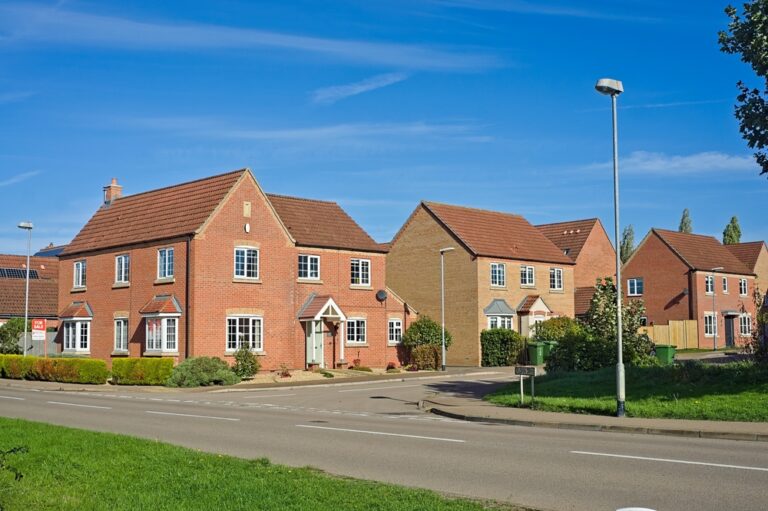Help to Buy has had various rules since it began in 2013 and it’s important to understand everything about the scheme before you use it.
The current scheme also ends soon and there are deadlines you’ll need to consider if you’re thinking of buying a home using Help to Buy.
In this guide, we explain the current Help to Buy rules, and reveal the key dates and deadlines before the scheme closes for good.
What is the Help to Buy scheme?
The Help to Buy scheme enables first-time buyers to purchase a new home with a 5% deposit, alongside a government equity loan covering 20% (40% in London) of their purchase price.
It’s estimated that the Help to Buy scheme has helped as many as 270,000 people purchase a home since 2013.
Is the Help to Buy scheme ending?
The Help to Buy scheme is set to end on March 31, 2023, and the deadline for new applications is October 31, 2022.
What happens after Help to Buy ends?
The Help to Buy scheme ends in 2023 and there are some key dates and times you need to be aware of if you’re buying under the current scheme.
The Help to Buy application deadline
The final deadline for Help to Buy applications is 6pm on Monday, October 31, 2022.
Your application for a Help to Buy equity loan must be submitted no later than that if you wish to purchase a new home under the scheme.
The practical completion deadline
Practical completion refers to the point where your new home is ready to live in and has been given a builders’ warranty.
The deadline for practical completion of Help to Buy properties is December 31, 2022, and this means your builder must have finished constructing your home by that date, alongside issuing the property with a new home warranty.
The Help to Buy purchase completion deadline
To be eligible for a Help to Buy equity loan, you must have completed your purchase and have the keys to your new home by 6pm on March 31, 2023.
Before you purchase a home under the Help to Buy scheme, check with your builder that both the practical completion date and purchase completion date are achievable.
“If you still want to take advantage of Help to Buy, you must submit your application to your Help to Buy agent by 6pm on October 31, 2022,” says Rob Smith, Managing Director of Ellis & Co.
“By March 31, 2023, you will need to have completed the purchase of your home, having your keys by 6pm.”
What happens if my Help to Buy property isn’t ready in time?
If your builder can’t complete your home before the practical completion date of December 31, 2022, your Help to Buy reservation fee must be returned to you in full.
If you’ve exchanged contracts but your builder is unable to meet the purchase completion deadline of March 31, 2023, they must legally void your contract and return your deposit in full.
However, you may still have to cover other expenses, such as conveyancing fees, mortgage valuation fees and survey fees.
Will there be a Help to Buy scheme extension?
There are no plans in place to extend the Help to Buy scheme beyond its end date of March 31, 2023.
In 2019, then Housing Secretary Robert Jenrick suggested the Help to Buy scheme could be extended beyond March 2023.
But with changes in the Cabinet and a new Prime Minister, it now looks as if the scheme will definitely come to an end on that date.
Will there be a Help to Buy replacement?
There are no plans to introduce a replacement scheme for Help to Buy, according to the government.
However, other existing homebuyer schemes will remain in place, including:
Shared Ownership
Under the Shared Ownership scheme, first-time buyers and existing homeowners who can’t afford the property they need can purchase a share of a property.
Because you’ll buy a share of the property rather than 100% of it, you can buy with a smaller deposit and smaller mortgage.
However, you’ll also pay rent to a housing association on the share you don’t own, plus a ground rent and service charge as Shared Ownership homes are leasehold.
The Lifetime ISA
With a Lifetime ISA, buyers can save up to £4,000 per year and the government will add a 25% bonus up to £1,000 per year.
If you’re saving for your first home, you can withdraw your Lifetime ISA cash, including the bonuses, when you need it, but the maximum purchase price of the home you buy must be £450,000 or less.
But if you withdraw the cash for other reasons, you may have to pay a withdrawal penalty of 25%.
How does Help to Buy work?
With Help to Buy, first-time buyers can purchase a new-build home with a 5% deposit and a 20% (40% in London) government equity loan.
The remaining 75% (55% in London) comes from a Help to Buy mortgage, which are only offered on a repayment basis.
Help to Buy examples
If you were buying a £300,000 property outside of London, this is an example of how your equity loan works:
| Percentage of purchase | Value | |
| Purchase deposit | 5% | £15,000 |
| Equity Loan | 20% | £60,000 |
| Help to Buy mortgage | 75% | £225,000 |
| Total purchase price | £300,000 |
In London, 40% equity loans are available, meaning a £300,000 property would work out as follows:
| Percentage of purchase | Value | |
| Purchase deposit | 5% | £15,000 |
| Equity Loan | 40% | £120,000 |
| Help to Buy mortgage | 55% | £165,000 |
| Total purchase price | £300,000 |
Help to Buy interest rates
The Help to Buy equity loan is interest free for the first five years and then interest is payable from year six at 1.75% of the value of the loan.
Each year thereafter, the interest increases by the Consumer Price Index plus 2%.
Paying back your equity loan
Equity loans must be repaid after 25 years but can be paid back either through the sale of your home or through your own capital or remortgage.
If you decide to pay back your equity loan without selling your property, you can only pay back a minimum of 10% at any time.
When you repay an equity loan, you pay back the same percentage value of your property.
So, if your property increases or decreases in value, you’d pay back 20% (40% in London) of the property’s new valuation.
For example, a property purchased for £300,000 with a 20% equity loan and then sold four years later for £325,000 would see the repayable value of the loan increase from £60,000 to £65,000.
“Remember the total amount you repay is a percentage value of your home at the time, and not the original amount you borrowed,” stresses Ellis & Co Managing Director Rob Smith.
Regional price caps
The current version of the Help to Buy scheme has maximum purchase prices based on which region of England you’re buying in.
Any property costing more than the price cap can’t be purchased with a Help to Buy equity loan.
| Location | Maximum purchase price |
| North East | £186,100 |
| North West | £224,400 |
| Yorkshire & Humber | £228,100 |
| East Midlands | £261,900 |
| West Midlands | £255,600 |
| East of England | £407,400 |
| London | £600,000 |
| South East | £437,600 |
| South West | £349,000 |
Who qualifies for Help to Buy?
To be approved for a Help to Buy equity loan you must:
- Be aged 18 or over
- Be a first-time buyer
- Both be first-time buyers if buying with someone else
- Be able to afford Help to Buy fees and interest payments
- Be buying a new-build property sold by a registered Help to Buy builder
- Be buying your property to live in as your main and only home
The pros and cons of Help to Buy
Before you commit to a Help to Buy equity loan, it’s important to understand the pros and cons:
| Help to Buy pros | Help to Buy cons |
| You can buy a home with a smaller deposit | The loan amount isn’t fixed |
| You may be able to buy sooner | You can only buy a new-build home |
| The loan is interest-free for five years | Not all lenders offer Help to Buy mortgages |
| Interest after five years is competitive | There are regional price caps |
“If you still have any questions regarding the equity loan and Help to Buy scheme, speak to one of our agents today or pop into your local branch,” says Ellis & Co’s Rob Smith.
Further reading…
- The different types of homeownership explained
- Your beginners’ guide to stamp duty
- Buying a starter home? Here’s what you’ll need to consider
Still have questions? Contact your local Ellis & Co Branch today: www.ellisandco.co.uk/e…








